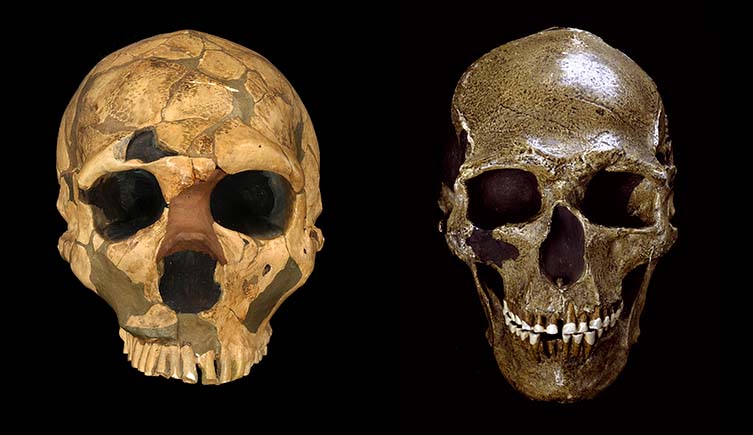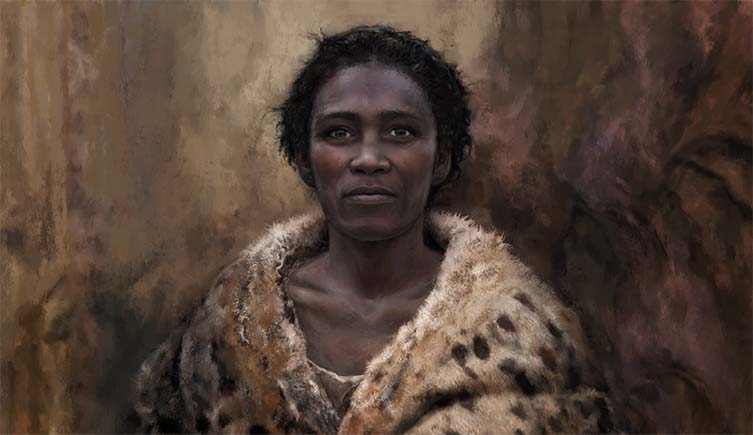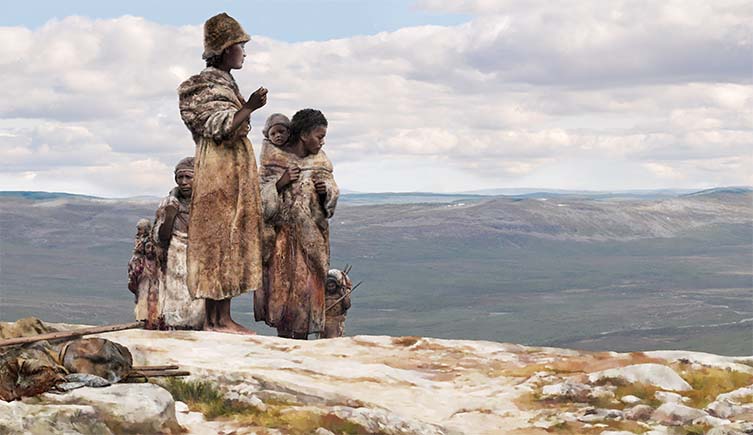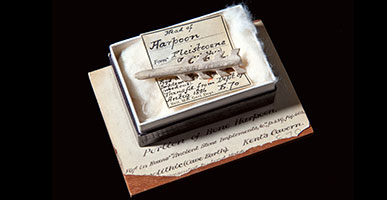Our species mated with the Neanderthals much later than thought.
New research reveals that Neanderthal genes entered our own DNA within the past 50,000 years, rewriting the story of how Homo sapiens spread across the world.

The legacy of the Neanderthals lives on in the genes they left behind in our species. © The Trustees of the Natural History Museum, London
Our species mated with the Neanderthals much later than thought.
New research reveals that Neanderthal genes entered our own DNA within the past 50,000 years, rewriting the story of how Homo sapiens spread across the world.
The Homo sapiens fossils found beneath Ranis Castle in central Germany were already the oldest evidence of our species in northern Europe. Now, these ancient German fossils have torn up the timeline of human evolution.
Papers published in the journals Nature and Science have used the bones to narrow down when Neanderthals and H. sapiens interbred. Sequencing their ancient DNA has revealed that the two species mixed during a single period between 45,000-50,000 years ago.
Professor Johannes Krause, who co-authored the Nature paper, says that this event is thousands of years younger than previous estimates. As a result, the migration of ancestral Homo sapiens out of Africa must have also happened a lot later than expected.
“These results provide us with a deeper understanding of some of the earliest pioneers that settled in Europe,” he says. “They also indicate that any modern human remains found outside Africa that are older than 50,000 years could not have been part of the common non-African population that interbred with Neanderthals.”
Professor Chris Stringer, an expert in human evolution at the Natural History Museum who was not involved in the study, says that this changes our understanding of many ancient human fossils.
“This research shows that any evidence of Homo sapiens fossils or archaeology older than 50,000 years in places like western Europe, China and Australasia probably represents populations that died out without giving rise to any contemporary populations,” he explains.
“This means it was likely there were numerous pre-50,000-year dispersals of Homo sapiens from Africa by small, pioneering groups that were unable to establish a longer-term foothold.”

While Neanderthals (left) and Homo sapiens (right) split into separate species hundreds of thousands of years ago, they still had the ability to intebreed. © The Trustees of the Natural History Museum, London
Despite going extinct around 40,000 years ago, the genes of Neanderthals are still found in humans today.
The exact Neanderthal DNA percentage in H. sapiens varies, depending on a person’s heritage, but is on average around 2%. Generally, people whose ancestry lies outside of Africa have more Neanderthal DNA than those from within Africa.
This has been used as evidence that both species must have bred after H. sapiens migrated out of the African continent. Narrowing down the date this happened further has been difficult, as so far just five archaeological sites older than 40,000 years ago have preserved DNA.
The genetic evidence that does exist complicates things further. This is because the remains from different sites have suggested that there were differing numbers of interbreeding events.
The fossils from Ranis have now seemingly solved this puzzle.
Using ancient DNA, the Nature paper has now revealed that the fossil remains consist of a group of six H. sapiens, four of which were related. These include a mother, given the name Ranis 4, as well as her daughter and what might have been aunts or cousins.

The individual found at Zlatý kůň, Czechia, was a distant cousin of some of the people living at Ranis. © Tom Björklund
What’s truly groundbreaking, however, is that Ranis 4 was a distant relative to human remains found at Zlatý kůň in Czechia. By comparing the two, scientists were able to figure out that their ancestors bred with Neanderthals in a single event around 80 generations beforehand.
This allowed them to calculate that the event must have taken place between 45,000-49,000 years ago.
As a result, the arrival of ancient H. sapiens in places like Australia, which was previously thought to have happened by 50,000 years ago, must either be later than thought, or by populations which died out without descendants.
“Previous estimates placed the interbreeding event between 50-60,000 years ago, but this younger date means that the ancestors of living non-Africans must have migrated later than this,” Chris says. “This changes the timings of many moments in the evolution of our species.”
“For instance, the arrival of populations that gave rise to present-day people in southeast Asia and Australasia must have happened less than 50,000 years ago, because their genomes share the same interbreeding event.”
“It also means interbreeding with another species, the Denisovans, happened even later as genomic evidence shows it took place after Neanderthal genes were already in Homo sapiens.”

Because Homo sapiens and Neanderthals mixed later than expected, the migration of our species across the world must also have happened later. © Tom Björklund
To find out more about the interbreeding event, a separate paper in Science compared ancient genomes ranging from 45,000 to 2,200 years old to those of 275 living people.
Their analysis shows that the event wasn’t a single sexual encounter, but instead an extended period of breeding over time. This likely occurred between the ancestral population of H. sapiens outside Africa and a group of Neanderthals.
While both species mated at other times and in other places, these populations didn’t pass on their genes to living humans.
By comparing the ancient genomes to each other the researchers looked for signs of natural selection. If Neanderthal genes helped H. sapiens to adapt to their new surroundings, then it would be expected for the genes to increase in frequency in the genome. If the genes were a disadvantage, they would be rapidly removed.
In total, they found 347 Neanderthal genes that were at high frequencies in the genomes of living and early H. sapiens. This suggests they were immediately beneficial as our ancestors’ skin colour, immunity and nervous systems adapted to the world outside Africa.
These Neanderthal genes still have implications for humans living today. Neanderthal genes have been linked to a variety of characteristics, from hair colour to being a morning person, and may also be linked to health conditions like diabetes.
While the interbreeding seems to have benefitted our species, it may have ultimately led to the extinction of the Neanderthals. Fewer Neanderthals breeding with each other would have had a significant impact on their populations, and could have hastened their demise.
Studying more ancient genomes will provide deeper insights into this seminal moment in the history of our two species, and help to explain how H. sapiens became the last surviving species of human.

Museum science is helping to answer where, when and how humans evolved.
Don't miss a thing
Receive email updates about our news, science, exhibitions, events, products, services and fundraising activities. We may occasionally include third-party content from our corporate partners and other museums. We will not share your personal details with these third parties. You must be over the age of 13. Privacy notice.
Follow us on social media